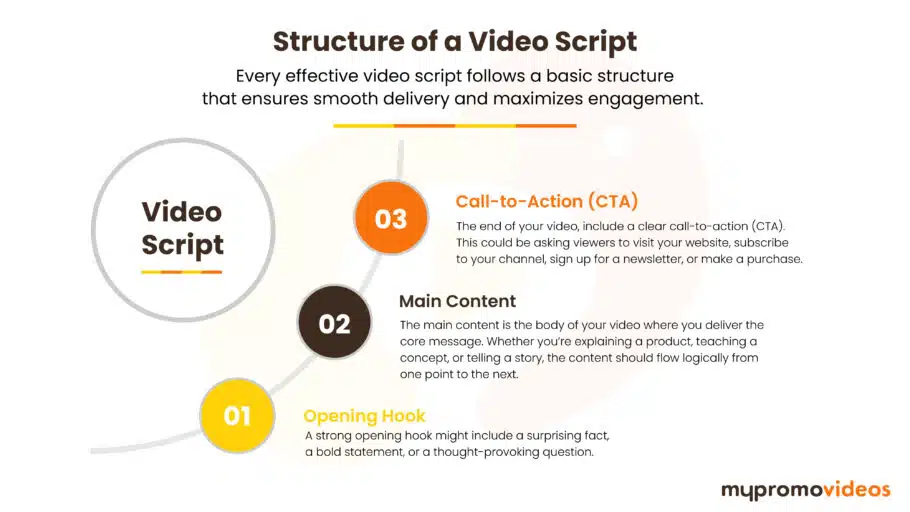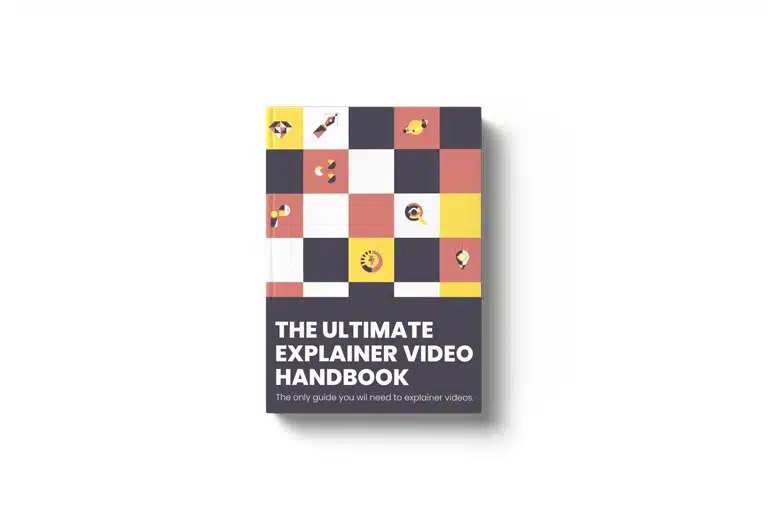Last Updated on September 25, 2024
Article Contents
Mastering Video Script Writing: A Comprehensive Guide
Writing a compelling video script is an essential part of video production. A script serves as the backbone of your entire project, guiding the narrative, dialogue, and visuals. Whether you’re crafting a tutorial, an explainer video, or a product demo, a well-written script ensures that your video is engaging, clear, and aligned with your goals. This comprehensive guide will walk you through how to write a script for a videos, breaking down the process into easy-to-follow steps, practical techniques, and tips to make your scriptwriting effective and professional.
What is Script Writing?

Scriptwriting is the process of creating a structured written guide for your video. It outlines the dialogue, visual elements, and narrative flow to ensure that your message is clear and delivered effectively. Unlike traditional writing, video script writing focuses on both what is said and what is seen, making it crucial to think about visuals, timing, and pacing.
Scripts are used for various types of videos, including commercials, instructional videos, corporate presentations, and social media content. The goal is to ensure that every aspect of the video—from words to visuals—contributes to the overall message.
What is the Importance of Scriptwriting?
Scriptwriting is crucial because it provides structure and clarity to your video. A good script keeps your message focused and ensures that all parts of the production team are on the same page. Without a script, videos can feel disorganized or off-topic, leading to confusion or disengagement from the audience.
Furthermore, a well-thought-out script saves time and resources during the production process. When the script is clear, the filming and editing processes go more smoothly, as everyone knows exactly what to capture and how to present it.
Key Elements of a Good Video Script
- Clarity: The script should be easy to follow and understand for both the production team and the audience.
- Structure: A well-organized script flows logically from beginning to end, guiding the viewer through the content.
- Engagement: The script needs to captivate the audience’s attention, keeping them interested throughout the video.
- Tone: The tone of the script should match your audience and the purpose of the video, whether formal, friendly, or instructional.
Pre-Writing Preparation
Before you begin writing, preparation is essential. Proper planning helps ensure that your script will achieve its purpose and resonate with the intended audience.
Defining Your Target Audience
The first step is to define your target audience. Understanding who will be watching the video allows you to tailor the content and language to their preferences, needs, and interests. For example, the tone and structure of a script for a professional corporate video will differ from that of a fun, casual YouTube tutorial aimed at younger viewers.
Ask yourself questions like:
- Who is my audience?
- What do they already know about the topic?
- What problems are they facing that this video can solve?
Once you know your audience, you can craft a script that speaks directly to them.
Establishing the Video’s Purpose and Goals
What is the main goal of your video? Is it to educate, entertain, inform, or persuade? Defining the video’s purpose will help you stay focused as you write. For example, a product demo video should highlight the product’s key features and benefits, while a training video should clearly explain a step-by-step process.
Keep the video’s goals in mind throughout the scriptwriting process, ensuring that every element aligns with the overall objective.
Researching Your Topic
Researching your topic is a critical step in creating an accurate and informative script. Depending on the subject matter, this may involve gathering data, reviewing existing content, or speaking with experts. Comprehensive research ensures that your script is factually correct and provides valuable insights for the viewer.
If your video involves technical or detailed information, make sure you fully understand the subject so that your script can break down complex ideas into simple, digestible parts.
Structure of a Video Script
Every effective video script follows a basic structure that ensures smooth delivery and maximizes engagement. Here’s how to structure your script:

Opening Hook
The opening of your video is crucial for grabbing attention. The first few seconds need to captivate the viewer, encouraging them to keep watching. A strong opening hook might include a surprising fact, a bold statement, or a thought-provoking question.
For instance, a tutorial video might start with, “Ever wondered how to double your productivity in half the time?” This immediately piques the viewer’s interest and sets up the content to follow.
Main Content
The main content is the body of your video where you deliver the core message. Whether you’re explaining a product, teaching a concept, or telling a story, the content should flow logically from one point to the next. Each section should build on the previous one, keeping the audience engaged and informed.
For example, in an explainer video, you would first introduce the problem, then explain the solution in clear, simple steps, using visuals to reinforce the key points.
Call-to-Action (CTA)
At the end of your video, include a clear call-to-action (CTA). This could be asking viewers to visit your website, subscribe to your channel, sign up for a newsletter, or make a purchase. The CTA should align with your video’s goals and encourage the viewer to take the next step.
For instance, “Click the link below to get started with a free trial today” gives the audience a direct instruction that’s easy to follow.
Writing Techniques for Video Scripts
Effective video scripts use specific writing techniques to engage the audience and keep the message clear. Here are some best practices:
Conversational Tone
Write your script in a conversational tone, as though you’re speaking directly to the viewer. This makes the video feel more personal and relatable. Avoid formal or complex language, which can create distance between you and your audience.
For example, instead of saying, “One must utilize this product for optimal results,” say, “You should use this product to get the best results.”
Active Voice and Present Tense
Using active voice and present tense keeps the writing dynamic and engaging. It creates a sense of immediacy that draws viewers into the content. For example, “We’re solving the problem” is more direct and engaging than “The problem is being solved.”
Concise and Clear Language
Keep your language concise and to the point. Viewers have limited attention spans, so it’s important to deliver information quickly and clearly. Every word in your script should add value to the overall message, and unnecessary filler should be cut.
Incorporating Visual Elements
When writing your script, always think about the visuals. Motion graphics, animations, and cutaway shots can all enhance the script, adding depth to the content. If you’re describing a process, think about how visual aids or demonstrations can clarify the message. This will help create a more immersive and engaging experience for the viewer.
Step-by-Step Guide to Writing a Video Script
Now that you’ve covered the basics, let’s dive into the step-by-step process of how to write a good script for a video:
Brainstorming Ideas
Start by brainstorming ideas related to your video’s topic. Write down any thoughts, concepts, or points that could be relevant. Don’t worry about organization at this stage—just let the ideas flow. This creative process will help you gather material to structure your video.
Creating an Outline
Once you have your ideas, organize them into a structured outline. The outline should cover the opening hook, main content, and CTA. This roadmap will help ensure that your script flows logically and covers all the necessary points.
Writing the First Draft
Using your outline as a guide, start writing the first draft of your script. At this stage, focus on getting your ideas down without worrying too much about perfection. Aim for clarity and conciseness, keeping the tone conversational and engaging.
Editing and Refining
Once your first draft is complete, go back and edit it for clarity, tone, and flow. Remove any redundant words or phrases, tighten up the language, and ensure that the visuals align with the script. Read the script aloud to check for awkward phrasing or pacing issues.
Video Script Writing Samples
Here are some video script writing samples to give you an idea of how different types of scripts look:
Explainer Video Script Example
- Opening Hook: “Struggling to keep track of your finances? We’ve got a solution.”
- Main Content: Introduce the problem, explain how the product or service solves it, use visuals to demonstrate the solution in action.
- CTA: “Start managing your money better—sign up for a free trial today!”
Product Demonstration Script Example
- Opening Hook: “Meet the product that will change the way you work.”
- Main Content: Highlight key features of the product, demonstrate how it works, and explain the benefits.
- CTA: “Get yours today—click the link to order!”
Tutorial Script Example
- Opening Hook: “Want to learn how to bake the perfect cake? Let’s get started!”
- Main Content: Break the process down into easy-to-follow steps, using visuals to show each step in real-time.
- CTA: “If you found this helpful, subscribe for more tutorials!”
Tips for Writing a Good Video Script
Here are additional tips to ensure your script is effective and engaging:
Timing and Pacing
Ensure that the script matches the length of the video. Keep an eye on how long it takes to read each section aloud, and adjust the content accordingly. You don’t want your video to feel rushed or too slow—strike the right balance in pacing.
Incorporating Feedback
It’s always a good idea to seek feedback from others before finalizing your script. A fresh perspective can help catch things you might have missed, such as unclear language or areas where more detail is needed.
Reading Aloud and Refining
Once you’ve made revisions, read the script aloud to check the flow and tone. This step helps you identify any awkward phrasing and ensures that the dialogue sounds natural when spoken.
Common Mistakes to Avoid in Video Script Writing
- Overcomplicating the Message: Stick to the main points and avoid overloading the audience with too much information.
- Ignoring Visuals: A script is just one part of the video. Make sure the visuals are aligned with the narrative and help to reinforce the message.
- Using Jargon: Avoid technical language or industry-specific terms that might confuse your audience.
Tools and Resources for Video Script Writing
Several tools can help streamline the scriptwriting process, including:
- Celtx: A comprehensive tool for writing, organizing, and formatting scripts.
- Final Draft: Popular screenwriting software that helps with formatting and revisions.
- Google Docs: A simple, collaborative tool for writing and sharing your script with your team.
Conclusion
Mastering video script writing is essential for creating compelling and effective videos. By preparing thoroughly, structuring your script logically, and using the right writing techniques, you can ensure your videos capture attention, deliver the message clearly, and inspire action. Whether you’re writing a tutorial, explainer, or demo video, this guide provides all the tools you need to succeed in crafting high-quality scripts.

